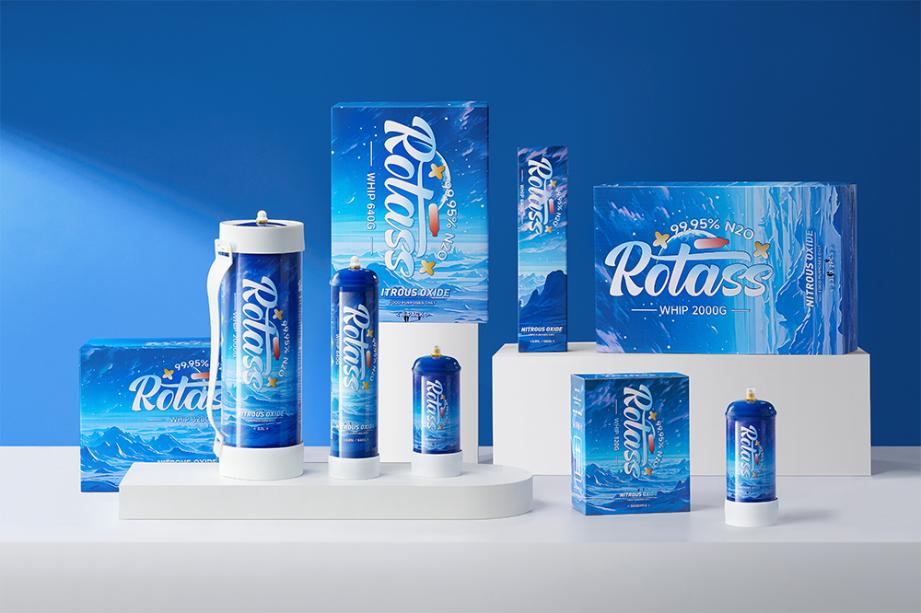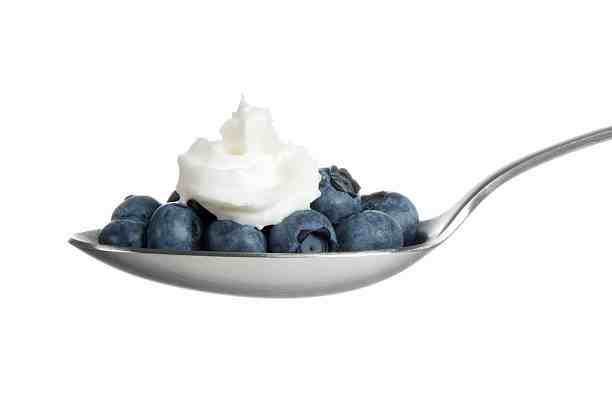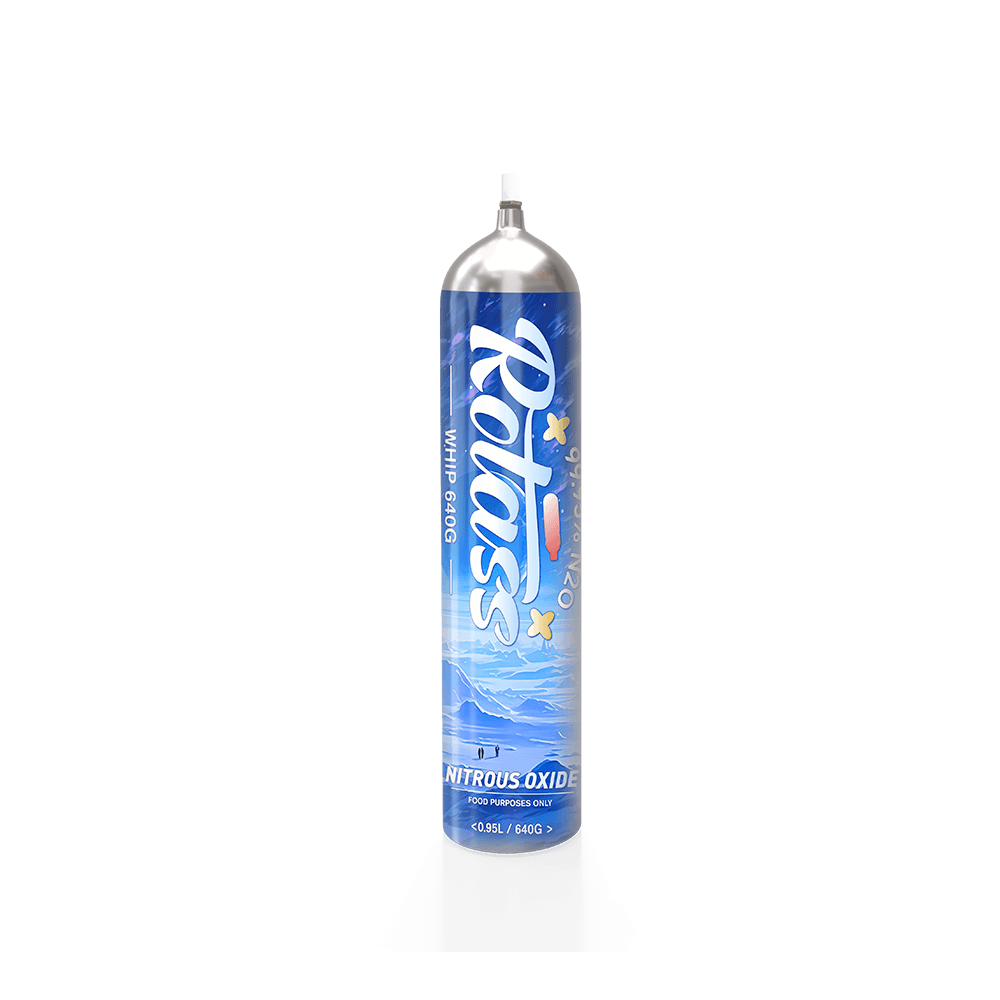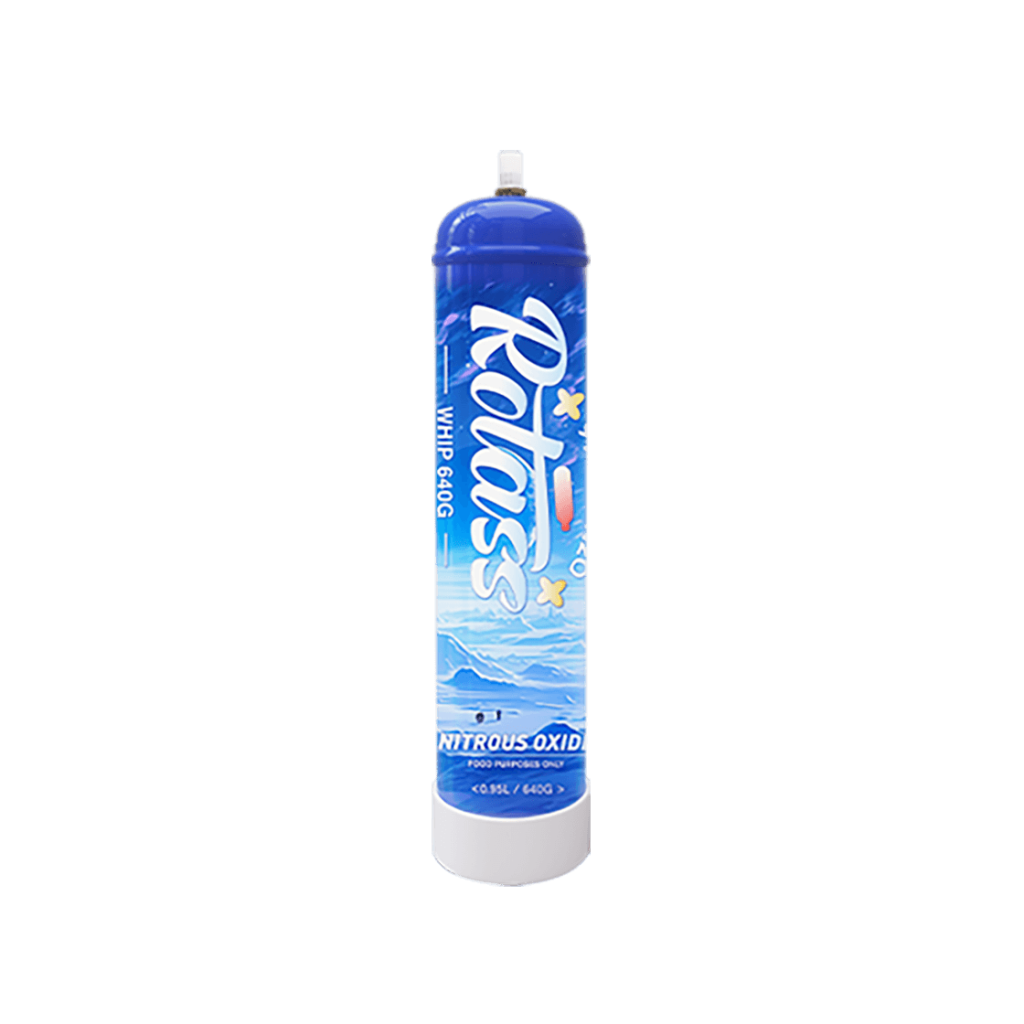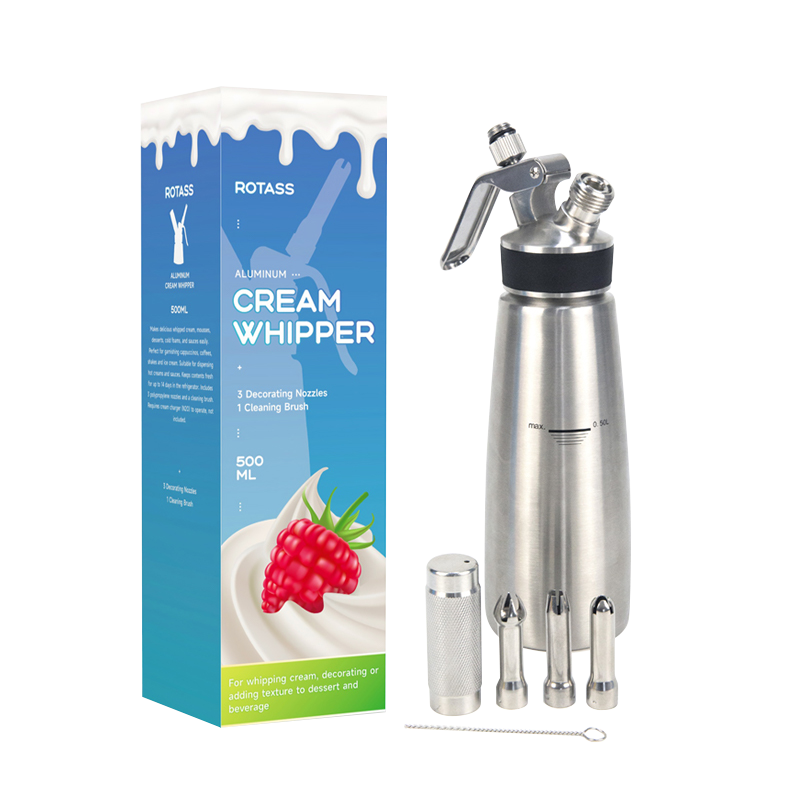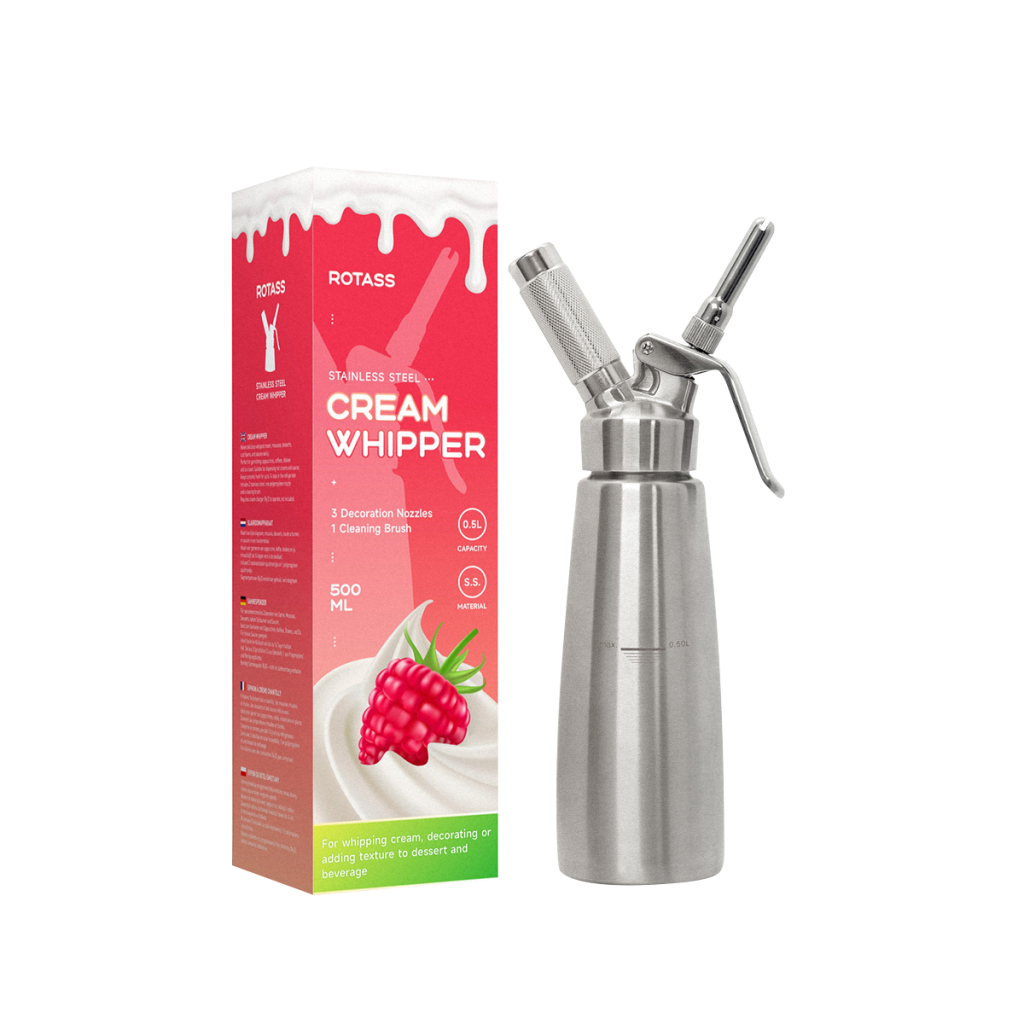2025 / 10 / 31
Aluminium Vs Stainless Steel Whipped Cream Dispenser: A Comparison Of Rotass And Other Brands (2025)
Table of Contents
The whipped cream dispenser plays an indispensable role in both home and professional kitchens. From making coffee milk caps, dessert decorations to catering products, it can quickly make cream light and smooth, and is a little helper to improve product efficiency and aesthetic appeal. However, many people are often troubled by a question when making a purchase: Is stainless steel better or is aluminum more worth buying?
Although the two look similar, they differ significantly in terms of safety, durability, weight and ease of cleaning. To help everyone understand the differences more intuitively, we conducted a real test comparison of several mainstream brands on the market, including Rotass, iSi, Chefmaster, Mosa and Tesor, and finally obtained a relatively objective usage report. Whether you are a family enthusiast or a professional baker, this article can help you find a more suitable choice.

Why Is The Choice Of Material For Cream Foaming Equipment So Important?
The basic principle of a cream whipped cream dispenser is to mix nitrous oxide gas with cream under high pressure to form fine and dense foam. Due to the high-pressure environment inside, the safety and durability of the bottle material are particularly crucial.
Different materials not only affect safety but also bring different feelings in terms of user experience.
- Stainless steel is renowned for its strength, corrosion resistance and ease of cleaning, making it the preferred choice for many professional kitchens.
- Aluminum is favored by household users for its lightness, portability and affordability.
What seems like a simple material selection actually determines the service life and maintenance cost of the whipped cream dispenser, and is also related to the detailed experience during each production.
Which Is Better Aluminum Or Stainless Steel Whipped Cream Dispenser?
Durability and strength
Stainless steel whipped cream dispensers can withstand higher pressure and will not deform even after being used continuously for hundreds of times. Although aluminium is relatively light, it is prone to slight deformation or scratches under high pressure. For professional kitchens that are frequently used every day, stainless steel is undoubtedly more reliable.
- Conclusion: Stainless steel has obvious advantages in terms of strength and stability.
Corrosion resistance and food safety
The surface of stainless steel has extremely strong anti-oxidation ability. Even if it comes into frequent contact with cream or cleaning agents, it will not rust. If the anodic oxide layer of an aluminum whipped cream dispenser is damaged, dark spots or even a slight odor may appear. In the long run, stainless steel is more capable of ensuring food hygiene and extending its service life.
- Conclusion: Stainless steel is safer and has a longer maintenance cycle.
Weight and portability
The advantage of aluminium lies in its lightness, making it particularly suitable for portable use or outdoor dessert making. Although stainless steel is stable, it becomes slightly fatigued when operated for a long time. For household users who do not need to move frequently, stainless steel can be given priority.
- Conclusion: For portable needs, choose aluminum; for fixed scenarios, choose stainless steel.
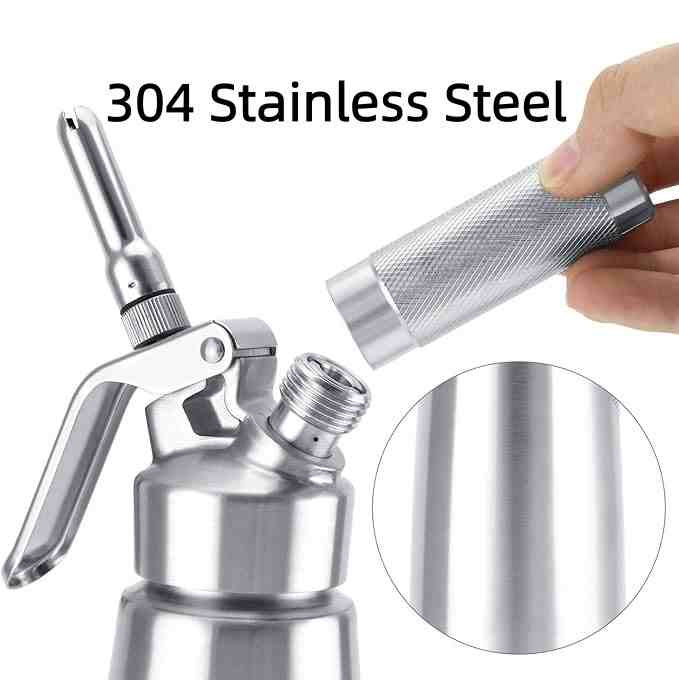
Cleaning and maintenance
The stainless steel material can be directly put into the dishwasher for cleaning and is not afraid of high temperatures. Aluminum products should be hand-washed to avoid strong alkaline cleaners to prevent surface damage. In addition, the interior of stainless steel is less prone to scale accumulation and is suitable for long-term use.
- Conclusion: Stainless steel saves more time and effort.
Cost and cost-effectiveness
Aluminum products have a low entry price and are suitable for beginners with limited budgets. Stainless steel has a relatively high initial cost, but it is more durable and does not require frequent replacement. In the long run, it is more cost-effective.
- Conclusion: For short-term budgets, look at aluminum; for long-term investments, look at stainless steel.
Appearance and professionalism
Stainless steel has a better texture and a stronger reflective effect, and is often used in coffee shops or dessert shops. Aluminum products can be coated in a variety of colors, making them more life-like.
- Conclusion: Different style orientations lead to choices that depend on personal aesthetics.
Different Brands Whipped Cream Dispensers Reviews
Evaluation methods and standards
To obtain scientific and comparable data, we conduct comparative tests through the following six core dimensions:
- Pressure resistance and safety: Repeat the test under the standard number of inflations to observe the stability of the bottle body and valves.
- Corrosion resistance: Stand in a humid environment for one week and test the surface changes and coating durability.
- Weight and feel: Subjectively score the comfort of operation and record the weight of empty bottles.
- Ease of cleaning: Test whether different components are easy to disassemble and whether they support dishwasher cleaning.
- Appearance and craftsmanship: including nozzle precision, weld point treatment and overall aesthetics.
- Cost performance: Comprehensive performance and price, warranty policy and replaceability of accessories.
Each item is scored out of 5 points, and the total score reflects the overall performance of the brand.
| Brand | Model / Material | Capacity | Pressure Test | Cleaning Ease | Overall Score | Ideal For |
| Rotass | Stainless Steel | 0.5 L | ★★★★★ | ★★★★★ | 4.9 | Home and professional kitchens |
| iSi | Stainless Steel | 1 L | ★★★★★ | ★★★★☆ | 4.7 | Cafes / large scale use |
| Chefmaster | Commercial Stainless Steel | 1 L | ★★★★☆ | ★★★★☆ | 4.6 | Baking studios |
| Mosa | Stainless Steel (1 pint) | 0.5 L | ★★★★☆ | ★★★★☆ | 4.5 | Home dessert hobbyists |
| Tesor | Stainless Steel | 1 L | ★★★★ | ★★★★ | 4.3 | Beginners / budget users |
1. Rotass

The Rotass stainless steel whipped cream dispenser stands out in terms of stability and sealing performance. After continuous use for 100 times, it still maintains excellent air tightness. The internal valve structure is tight and there is no leakage problem. The whipped cream is fine and uniform, and it is not easy to have unstable bubbles.
- Advantages: Excellent pressure resistance, no odor, easy replacement of sealing rings, and a stable appearance.
- Disadvantage: It is slightly heavier, but has extremely high stability.
- Recommendation reason: Suitable for home and commercial scenarios with requirements for security and durability.
2. iSi
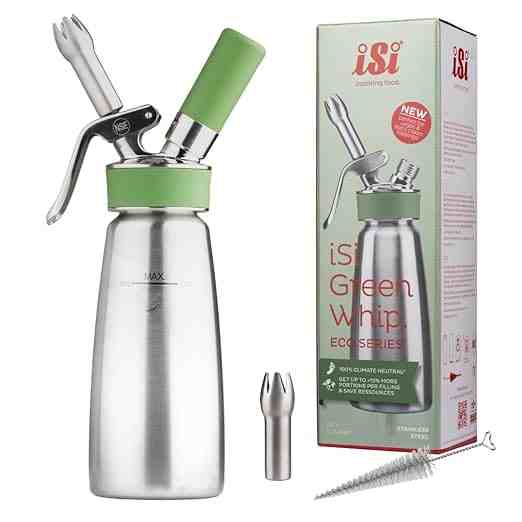
iSi is a long-established European manufacturer, and its 0.5L stainless steel model is the standard equipment for many catering institutions. The large-capacity design can meet the usage demands during peak hours, but it is relatively large in size and not very suitable for home use.
- Advantages: Stable pressure and large capacity.
- Disadvantages: High price and poor portability.
- Recommendation reason: Suitable for continuous production in large coffee shops or dessert shops.
3. Chefmaster
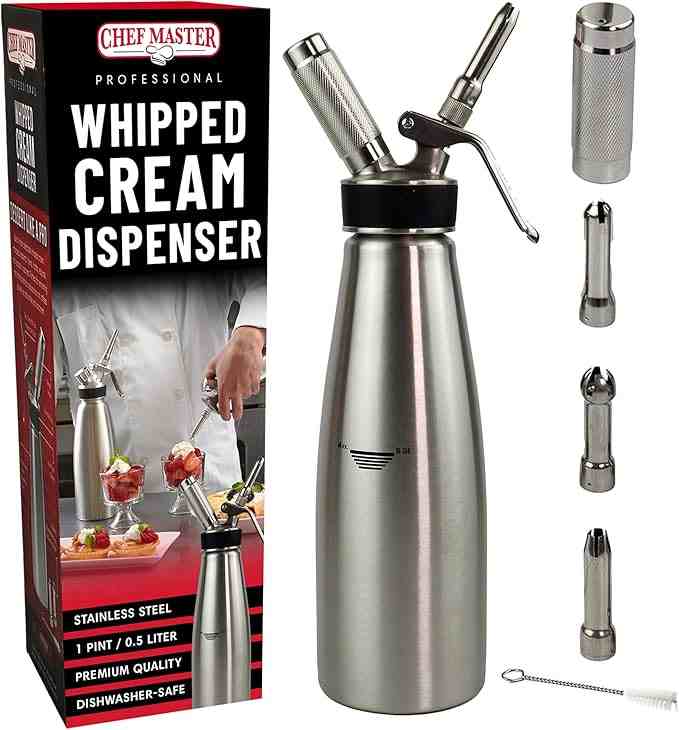
The Chefmaster stainless steel series strikes a balance between performance and design. Uniform foaming and smooth nozzle control. Overall, it has a relatively high cost performance among commercial grades.
- Advantages: Fine workmanship and modern appearance.
- Disadvantage: The nozzle seal is slightly tight. Novices need to be familiar with the operation.
4. Mosa

Mosa 1 pint stainless steel version is lightweight and convenient, making it an ideal choice for home dessert lovers. The overall performance is stable, but the capacity is slightly small and not suitable for large-scale production.
- Advantages: Compact and practical, easy to clean.
- Disadvantages: Limited capacity, slightly fine nozzle.
5. Tesor

As an entry-level brand, Tesor is affordable but has decent performance, making it suitable for occasional users. Although it is slightly inferior in the handling of details, its basic functions are complete.
- Advantages: High cost performance and a rich variety of replaceable parts.
- Disadvantage: The craftsmanship details are slightly rough.
Purchase Guide and Common Misconceptions
- Clarify the purpose and frequency: If used daily, it is recommended to invest in stainless steel. If you only make desserts occasionally, aluminium will do.
- Capacity matches demand: 0.5L is suitable for individuals, 1L is a regular capacity, and 5L is exclusively for commercial use.
- Don’t just look at the appearance and luster: Although some coatings are bright, it doesn’t mean they are safer or more pressure-resistant.
- Pay attention to the sealing and valve structure: detachable and replaceable parts can extend the service life.
- Confirm compatibility: The pneumatic interfaces of different brands may vary slightly. Before purchasing, please check the specifications.
Conclusions and Recommendations
Through systematic testing and comparisons with multiple brands, it can be seen that stainless steel cream whipped cream dispensers have obvious advantages in terms of safety, durability and ease of cleaning. Although aluminium products are lighter and cheaper, they are slightly inferior in terms of long-term use and high-pressure safety.
If you pay more attention to service life and stable performance, Rotass stainless steel whipped cream dispenser is undoubtedly an ideal choice. It performs exceptionally well in the withstand voltage test and is easy to clean, making it an all-round option for both household and professional use. For beginners or those with lightweight demands, Mosa and Tesor can also meet their daily production needs. If you pay more attention to lightness and economy, an aluminum whipped cream dispenser is still a good starting point.
No matter which material is chosen, only by ensuring regular maintenance and proper cleaning can every whipping be smooth, fine and full of fun.

FAQ
1. Will an aluminum whipped cream dispenser affect the taste of cream?
Usually not, but if the oxide layer is damaged, a slight metallic smell may occur.
2. Can stainless steel whipped cream dispensers be put in the dishwasher?
Most are possible, but it is recommended to avoid high-temperature drying procedures.
3. Is a larger capacity of a whipped cream dispenser always better?
Not necessarily. The larger the capacity, the heavier the operation. For household use, it is recommended not to exceed 1L.
4. How to determine if the whipped cream dispenser is leaking?
When a continuous gasping sound is heard or the foaming volume is insufficient, it is necessary to check the connection between the sealing ring and the valve.
5. Can air bombs be used interchangeably?
Generally, standard N₂O gas bombs can be used, but please ensure interface compatibility.
6. Which brand has the best after-sales service?
Rotass and iSi have a well-established after-sales system and an abundant supply of spare parts.


